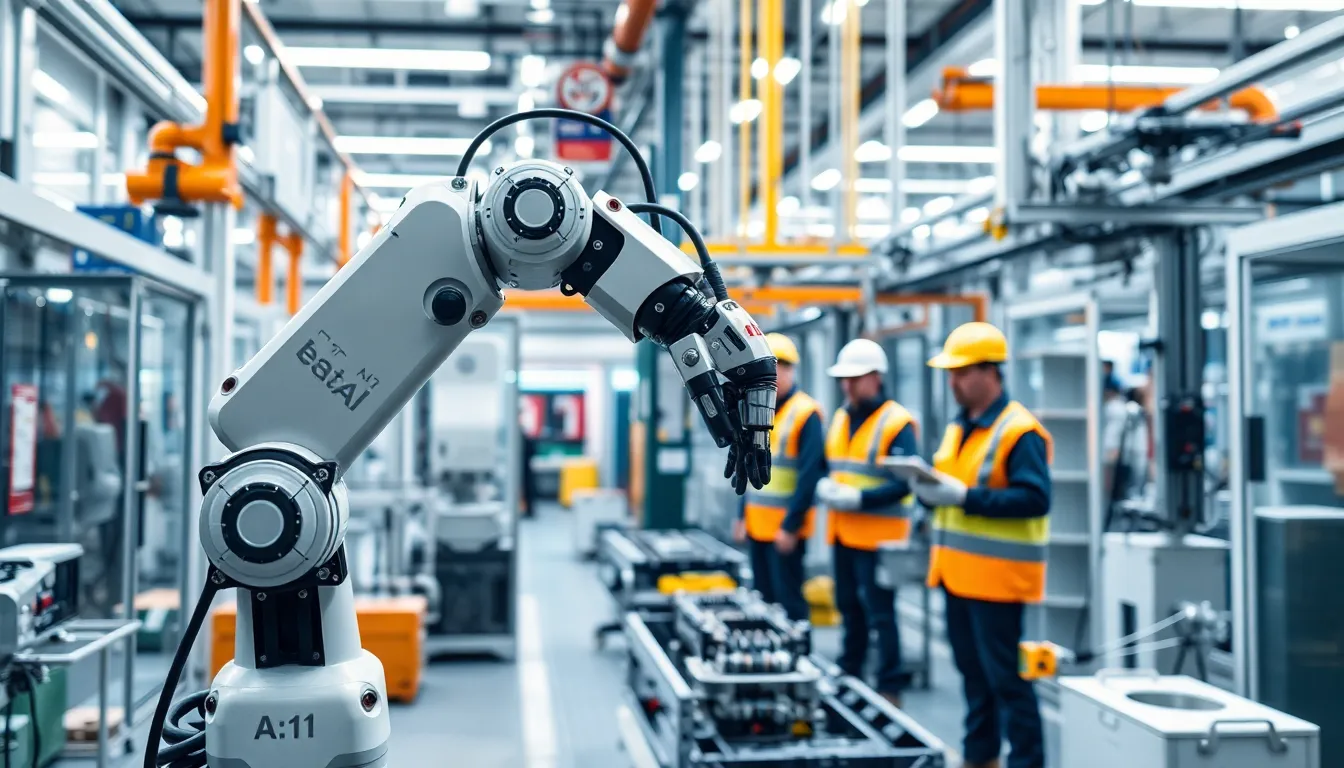Table of Contents
ToggleIn a world where robots might soon take over the chores (and maybe even the cooking), the fusion of AI and robotics is more than just sci-fi fantasy—it’s a reality that’s reshaping industries. Imagine a future where your vacuum cleaner not only cleans but also engages in witty banter while doing the job. Sounds appealing, right?
As technology leaps forward, AI and robotics are becoming the dynamic duo of innovation, enhancing everything from manufacturing to healthcare. These intelligent machines are not just tools; they’re partners in productivity, creativity, and—let’s be honest—entertainment. Buckle up as we dive into this fascinating realm where algorithms meet automation, and discover how they’re revolutionizing our lives in ways we never thought possible.
Overview of AI and Robotics
Artificial intelligence (AI) and robotics combine to form a powerful partnership, revolutionizing various sectors. Many industries like manufacturing and healthcare leverage this fusion to streamline processes and improve efficiency. Robots equipped with AI capabilities can analyze complex data rapidly and make decisions based on real-time information.
In manufacturing, automated systems enhance production lines, increasing output while reducing error rates. Advanced robots can now perform quality control tasks, identifying defects with precision. These smart systems adapt to changing conditions, demonstrating how AI serves as the brain behind robotic functionality.
Healthcare benefits significantly from AI and robotics collaboration. Surgical robots equipped with AI assist surgeons by providing enhanced visualization and precision during procedures. These tools improve patient outcomes and reduce recovery times.
Research suggests that the global AI and robotics market is set to expand significantly, with estimates predicting growth from $15 billion in 2021 to $80 billion by 2026. By integrating AI, robots can take on complex tasks, such as elderly care and rehabilitation, enhancing human interactions in a daily context.
AI algorithms enhance robots’ capabilities, allowing them to learn from experiences. This continual learning process means robots can improve their performance and adapt to various environments. As technology advances, the integration of AI and robotics will likely create even more innovative solutions across diverse applications, from home assistance to industrial automation.
The prospect of multifunctional robots capable of engaging in conversation blurs the lines between utility and companionship. Such developments redefine how humans interact with machines. Exploring these advances reveals insight into how AI and robotics are reshaping everyday life.
Applications of AI and Robotics

AI and robotics are reshaping various industries through innovative applications and advanced technologies.
Industrial Automation
Industrial automation increasingly relies on AI and robotics to enhance efficiency. Automation systems streamline production lines, significantly boosting output while minimizing errors. Robots equipped with AI algorithms perform precision tasks, such as quality control and assembly, leading to higher product standards. As a result, factories experience increased productivity and reduced operational costs. According to industry estimates, the global market for industrial automation is expected to reach $300 billion by 2026, underscoring the crucial role of AI and robotics in shaping the future of manufacturing.
Healthcare Innovations
AI and robotics transform healthcare by improving surgical procedures and patient care. Surgical robots assist medical professionals, enabling minimally invasive surgeries that result in quicker recovery times and reduced patient discomfort. AI systems analyze vast amounts of medical data, offering insights that enhance decision-making for treatments. Hospital staff benefit from robots that handle logistics, such as delivering medications and supplies. Industries project that AI in healthcare will generate over $45 billion by 2026, highlighting the growing importance of these technologies in optimizing patient outcomes and operational efficiency.
Benefits of AI and Robotics
AI and robotics offer multiple advantages across industries, revolutionizing processes and enhancing performance in various fields. Their combined capabilities drive efficiency and improve decision-making.
Efficiency and Productivity
Automated systems streamline production lines, leading to faster output. Robots enhance workflow by reducing human error during repetitive tasks. Significant efficiency boosts become evident with the integration of AI, which optimizes scheduling and resource allocation. Through these advancements, AI and robotics collectively support a projected $300 billion industrial automation market by 2026. Manufacturing environments see optimized operations, empowering companies to achieve higher productivity levels.
Enhanced Decision Making
AI analyzes large datasets swiftly, providing accurate insights for informed decisions. This capability supports healthcare providers in selecting appropriate treatment plans based on extensive medical information. Robotics enhance logistical efficiency within hospitals, ensuring vital resources are allocated when needed. With the healthcare sector expected to generate over $45 billion from AI by 2026, leveraging data-driven decisions becomes essential. The synergy of AI and robotics not only leads to better outcomes in treatment but also minimizes costs associated with mismanagement.
Challenges in AI and Robotics
AI and robotics face significant challenges that impact their development and implementation across various industries.
Ethical Considerations
Ethical dilemmas arise with the increasing integration of AI and robotics. Issues such as data privacy, job displacement, and accountability require careful attention. Developers must navigate the fine line between innovation and societal impact. For example, automated decision-making systems can lead to biased outcomes if not designed responsibly. Transparency in AI algorithms is essential for fostering trust among users. The potential for surveillance poses further ethical concerns as organizations balance technology’s benefits with individuals’ rights.
Technical Limitations
Technical constraints hinder the full potential of AI and robotics. Current technologies often struggle with understanding complex human emotions and contexts. Limited sensory perception restricts robots’ abilities to interact effectively with their environments. For instance, robots may have difficulty adapting to unexpected changes on production lines. Processing vast datasets requires significant computational power, which can increase operational costs. Finally, integration challenges between AI systems and existing infrastructure can complicate deployment efforts, impacting efficiency and scalability.
Future Trends in AI and Robotics
Emerging trends in AI and robotics indicate transformative developments across multiple sectors. Advanced robotics are set to become commonplace in industrial settings where they enhance automation, driving productivity gains. Facilities focus on implementing AI-powered machinery to streamline workflows, leading to increased output and minimal errors.
Healthcare innovations highlight the integration of AI systems in surgery. Surgical robots assist professionals in executing precise operations, positively impacting patient recovery times. Hospitals increasingly rely on intelligent systems to analyze medical data, enabling informed treatment decisions that elevate patient care.
Forecasts predict a dramatic growth in the AI and robotics market, expected to escalate from $15 billion in 2021 to $80 billion by 2026. Such growth signifies opportunities for robots to address complex tasks, including elderly care and rehabilitation. The development of conversational robots suggests a shift towards more human-like interactions, where companionship intertwines with utility.
As the evolution of AI continues, ethical concerns arise, particularly in the realms of job displacement and data privacy. Developers and policymakers must navigate these challenges, ensuring that advancements do not compromise societal values. Integration issues also persist as the current technologies fall short in comprehending intricate human emotions and contexts.
Robust discussions about these developments underscore their potential to reshape daily life. Organizations weighing the benefits and risks of AI in robotics play a pivotal role in steering this transformation. Embracing these advancements points towards a future enriched by innovative AI-driven design and human augmentation.
The integration of AI and robotics is set to redefine industries and everyday life. As these technologies evolve they promise to enhance productivity and creativity while addressing complex challenges. The potential for robots to perform intricate tasks and engage in human-like interactions highlights a future rich with possibilities.
While the journey is filled with exciting advancements the ethical implications and technical hurdles cannot be overlooked. Balancing innovation with societal impact is crucial as organizations navigate this rapidly changing landscape. Embracing these technologies will require careful consideration but the rewards could be transformative for all.



